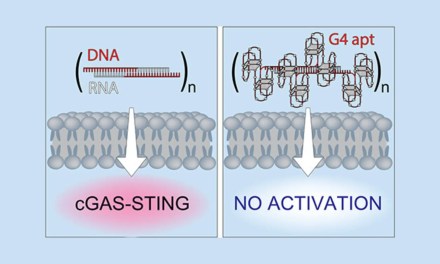The lens, with its optical clarity as the key characteristic, serves as a crucial element in the intricate realm of vision, allowing us to perceive the world around us with precision. At the heart of maintaining this optical clarity lie Connexins (Cxs), essential molecules orchestrating communication among lens cells. Recently, researchers unveiled a groundbreaking protocol designed to alter the function of Connexin hemichannels (HCs) within primary chicken lens fiber cells. Through the application of avian sarcomaleukosis virus, this innovative procedure offers insights into potential enhancements in lens health. This protocol marks a significant stride toward comprehending the intricate mechanisms governing lens transparency, promising advancements in ocular resilience and clarity of vision.
The lead researchers, Dr. Jean Jiang and Yu Du, were joined by their colleagues Dr. Francisca Acosta, Dr. Jianping Zhang, Yuxin Tong, Yumeng Quan and Dr. Sumin Gu, all from the University of Texas Health Science Center. They dissected lenses from chick embryos and extracted lens fiber cells. Then, they incubated the living lens fiber cells until the cells were ready to be infected by avian sarcomaleukosis virus, which altered the expression of Cx50 hemichannel and was followed by confirmation of the activation of HCs in lens cells. Lastly, they determined cell death and conducted statistical analysis. Their work is published in the peer-reviewed journal STAR Protocols.
This protocol, meticulously outlined from egg incubation to cell treatment and detection methodologies, as well as statistical analysis, offers a glimpse into the intricate mechanisms safeguarding lens transparency. Beyond mere elucidation, it holds promise in assessing factors regarding lens fiber cell metabolism, crucial for shielding lens fiber cells against oxidative stress, and represents the basis for future research of lens health. Through their efforts, we embark on a journey towards clearer vision and fortified ocular resilience. “The protocol involves using primary lens cells after altering expression of Cx50 HC, and tests for cell death after H2O2 treatment. Notably, gap junction (GJ) function cannot be detected due to the cell morphology and growth mode in this set up. This protocol allows for the investigation of the function of HCs and enables the detection of the apoptosis/necrosis in lens fiber cells and intracellular glutathione (GSH) changes caused by changes in HCs function,” Yu Du notes. In summary, the lead researchers, Dr. Jiang and Yu Du, along with their colleagues embarked on a quest to understand the pivotal role of Connexins in maintaining lens transparency and preserving the clarity of vision. Through meticulous experimentation, they developed a protocol to manipulate Connexin hemichannels within chicken lens fiber cells using avian sarcomaleukosis virus. Their perseverance yielded valuable insights into lens health enhancement strategies and their work not only illuminates the intricate mechanisms governing lens transparency but also hints at potential avenues for combating oxidative stress. As we unravel these mysteries, their journey offers hope for clearer vision and fortified eye health.
JOURNAL REFERENCE
Yu Du, Francisca M. Acosta, Jianping Zhang, et al. ” Protocol for altering connexin hemichannel function in primary chicken lens fiber cells using high-titer retroviral RCAS(A) infection.” STAR Protocols, 2023.
DOI: https://doi.org/10.1016/j.xpro.2023.102564.
ABOUT THE AUTHORS

Jean X. Jiang, Ph.D.
Professor and Zachry Distinguished University Chair in Cancer Research,
Vice Chair, Department of Biochemistry and Structural Biology
UT Health San Antonio
Dr. Jiang received her Ph.D. in Biochemistry from the State University of New York at Stony Brook in Biochemistry and pursued postdoctoral training at Harvard Medical School in Cell Biology. She has been a faculty member at UT Health San Antonio since 1997. Her primary research projects focus on connexin channels, cell signaling mechanisms in various tissues and cells, and the development of therapeutics in treating cancers and neurological diseases. Dr. Jiang has authored over 180 papers and holds multiple published and issued patents. Her research has received funding from various federal and private agencies. She is the recipient of the UT Health Presidential Distinguished Research Scholar Award and an Elected Fellow of the American Association for the Advancement of Science (AAAS) and the National Academy of Inventors (NAI).

Francisca M. Acosta, Ph.D.
NIH NIDDK F32 Postdoctoral Research Fellow
Department of Biochemistry and Structural Biology
UT Health San Antonio
Dr. Acosta graduated with a bachelor’s degree (B.S.) in Bioengineering from Rice University in 2015 and then went on to pursue postbaccalaureate training as part of the NIH The University of Kansas post-baccalaureate research training program (KU PREP), prior to coming to San Antonio to complete her doctoral degree (Ph.D.) in the Joint Biomedical Engineering Graduate program between The University of Texas at San Antonio (UTSA) and UTHSA in May 2020. Her research interests combine engineering, basic science, and translational research in the fields of Metabolism, Musculoskeletal, Diabetes, Aging, Cancer Biology, and Biomedical Engineering/Regenerative Medicine.

Yu Du, MD, Ph.D.
Research Fellow
Department of Biochemistry and Structural Biology
UT Health San Antonio;
Attending Physician
Department of Ophthalmology,
The Second Hospital & Clinical Medical School, Lanzhou University
Dr. Yu Du graduated from Lanzhou University. He conducted joint doctoral training at the University of Texas Medical Health Center in the United States from September 2019 to September 2021; during this period, he systematically carried out research on the regulation of lens redox homeostasis by lens cell Connexin gap junction channels/hemichannels in the laboratory of Dr. Jean X. Jiang. He is an expert in the diagnosis and treatment of various common ophthalmic diseases, mainly engaged in the diagnosis and treatment of amblyopia, strabismus, optometry, and low vision.















































